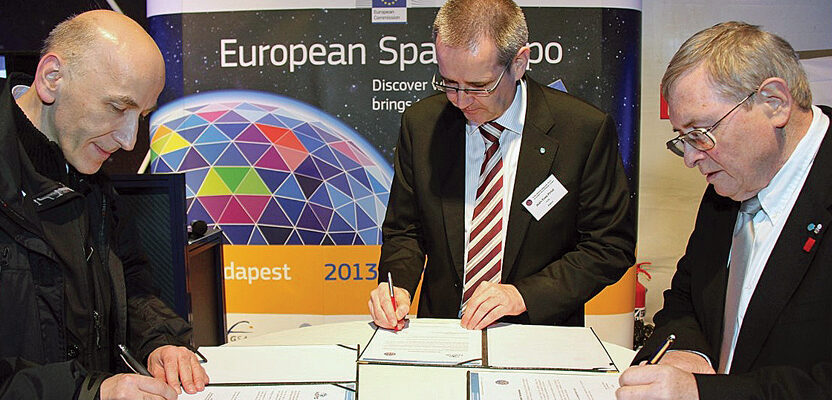By John Hohol and Curt Sumner
The surveying profession throughout the U.S. will soon celebrate National Surveyors Week, which as surveyors know is designated for the week in March following the third Sunday. In 2021, National Surveyors Week is March 21-27.
National Surveyors Week was initially proclaimed by President Ronald Reagan on February 13, 1984, and is dedicated to recognizing and promoting the importance of the surveying profession in the United States. The proclamation declared, in part, “In the colonial days, surveyors were among the leaders in the community – statesmen, influential citizens, and shapers of cultural standards.”
Subsequently, several presidents have specifically acknowledged NSW. The most recent acknowledgement was issued in 2020 by then-President Donald Trump. As is its practice, the National Society of Professional Surveyors will again in 2021 attempt to obtain a presidential proclamation.
Surveyors are the only professionals legally licensed to determine and mark property boundaries in the United States because of their education, training, and experience in this aspect of the profession. Still there are various aspects of surveying practice and history that date back at least as far as the Egyptian rope-stretchers who helped build the pyramids.
The nearly perfect squareness and north-south orientation of the Great Pyramid of Giza, built c. 2700 BC, affirm the Egyptians’ command of surveying. More information available at: www.nsps.us.com/page/NSW
Global Surveyors Day
The world depends daily on the work of surveyors. Many everyday occurrences, including fighting fires, emergency response by ambulances and police, and postal carriers delivering mail, depend on information provided by surveyors. A surveyor was there first to provide critical information used to insure that these essential tasks are possible.
Dedicated to recognizing and promoting the importance of surveyors and the surveying profession throughout the world, Global Surveyors Day was first proposed to the International Federation of Surveyors (FIG) in 2010 by John Hohol who has served for many years as the NSPS head of delegation to FIG. The Budapest Declaration was signed in 2013 by Jean-Yves Pirlot, representing the Council of European Geodetic Surveyors (CLGE), Hohol representing the National Society of Professional Surveyors (NSPS), and Gyorgy Domokos, CLGE delegate for Hungary, creating a common worldwide celebration for surveyors past and present. Global Surveyors Day is celebrated each year on March 21st. The date was chosen to insure that it will always occur during the U.S. National Surveyors Week.
In 2021, due to March 21st being a Sunday, the Global Surveyors Day celebration will be held on March 23. As a key element of the celebration during the COVID-19 pandemic, a worldwide virtual celebration will also be held online. It is scheduled to begin at 7:00 p.m. UTC (3:00 p.m. EST). More information will be provided when details are confirmed. More information about Global Surveyors Day is available at: www.surveyorsday.com.
Surveyors are invited to add information about their specific celebration of surveying to the calendar.
Special thanks to Trimble, a generous supporter of education, young surveyors and the surveying profession, and sponsor of National Surveyors Week and Global Surveyors Day.
Challenges to Licensure Continue
Primarily, the surveying profession is recognized for its benefit to the public good, and that the process to determine whom is qualified (through education, experience, and the licensure process) to provide related services to the general public is functioning well.
Still, from time to time (actually more often than one might think) efforts occur that could work (perhaps unwittingly) to undermine the laws, rules, and regulations designed to insure that those providing surveying services do so without causing harm to the public. Such a situation arose recently in Montana, resulting in a collaborative effort by the Montana Association of Registered Land Surveyors (MARLS) and NSPS.
Although in no way unique, a bill introduced in the Montana legislature would have allowed basically anyone to perform some of the activities currently defined among the “Practice of Land Surveying, Section 1. 37-67-101 Definitions.” The following activities were proposed to be stricken from those to be performed as the “practice of land surveying:”
”Practice of land surveying” means any service or work, the performance of which requires the application of special knowledge of the principles of mathematics, physical sciences, applied sciences, and:
(a) the principles of property boundary law to the recovery and preservation of evidence pertaining to earlier land surveys;
(b) teaching of land surveying subjects;
(c) measurement and allocation of lines, angles, elevations, and coordinate systems;
(d) location of natural and constructed features in the air, on the surface of the earth, within underground workings, and on the beds of bodies of water, including work for the determination of areas and volumes;
(e) monumenting of property boundaries;
(f)(d) platting and layout of lands and the subdivisions of land, including the alignment and grades of streets and roads in subdivisions;
(g) preparation and perpetuation of maps, plats, field note records, and property descriptions; and
(h) locating, relocating, establishing, reestablishing, laying out, or retracing of any property line or boundary of any tract of land or road, right-of-way, easement, right-of-way easement, alignment, or elevation of any of the fixed works embraced within the practice of engineering.
As a result of the relationship between MARLS and NSPS, executive director Curt Sumner was instructed by the NSPS executive committee to respond to a request from MARLS to write a letter to the bill’s patron expressing the NSPS concerns. MARLS also submitted a letter expressing its opposition to the bill, resulting in it being pulled.
This situation is another example of the importance of cooperation and collaboration among the entire community of professional surveyors in our collective aim to serve the public, and provide information regarding why licensing laws exist.

